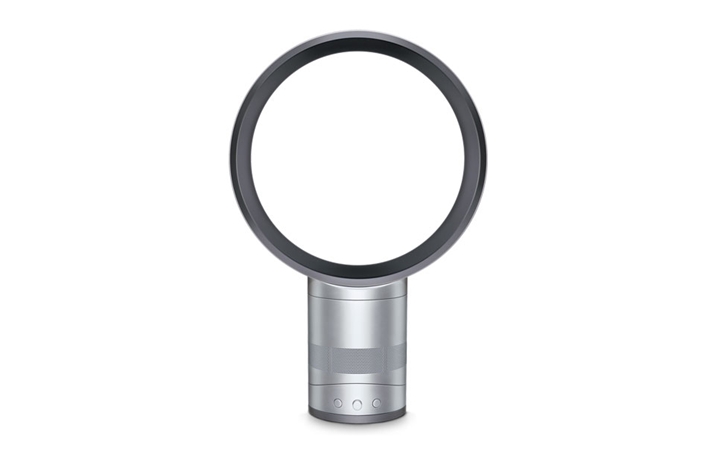Table of Contents Show
Traditional electric fans or commercial fans work by using a propeller-style blade which is protected by a mesh guard, and is driven by an electric motor. But since 2009 there has been a revolution of sorts in the desk fan world thanks to British inventor James Dyson.
Introducing the Dyson bladeless fan
The Dyson Air Multiplier is a bladeless fan design patented by Dyson back in 2009, and its somewhat mysterious and even magical looking way of producing air without a propeller blade has intrigued many a consumer.
Dyson is a bit like Apple of the home gadget world – they produce very stylish and elegant, premium quality products. And so when the Air Multiplier was first introduced to the world, it was one of the must-have products for your home or office.
But wait! How does it work? At first glance, there appears to be no moving parts, and it looks just like a hollow circle resting on a narrow pedestal. This cannot possibly be a working fan… or can it?
How it works
Dyson and his team were sufficiently annoyed by the buffeting noises that traditional desk fans make, and so after hundreds of tests and prototypes, the Air Multiplier was born.
According to Dyson, its ‘Air Multiplier technology‘helps the fan to draw in and amplify air 15 times. So how exactly does it work?
With blades!
OK so there aren’t any visible blades as you know, but inside the pedestal are 9 asymmetrically aligned blades which are attached to a motor, and these blades pull air into this rather futuristic looking fan. Dyson claims that it can pull in about 20 litres of air per second.
Air flows through a channel inside the pedestal and up to the hollow circle. The circle’s interior acts like a ramp of sorts, allowing air to flow along it, which also curves around and ends in slits in the back of the fan. The air then flows along the surface of the circle’s interior and out again towards the front of the fan.
What about the air multiplication, how does that work?
The air inside Dyson’s not-so-bladeless fan is ‘multiplied’through the use of some clever physics. Whilst the air flows through the slits in the circle and then out again through the front of the fan, the air behind the fan is drawn through the circle as well – this process is known as inducement or induction.
The flowing air pushed by the motor induces the air behind the fan to follow, and the air that surrounds the edges of the fan also begins to flow in the same direction as the breeze – this process is called entrainment.
It is the combination of these two processes that Dyson claims the Air Multiplier increases or ‘amplifies’air by 15 times.
Is it worth buying the Dyson Air Multiplier?
Although on paper it seems to be an innovative new take on the traditional desk fan, the £220 price tag puts off many consumers from buying one. For that sort of money, you could buy many standard desk fans, or even splash out on a portable air conditioning machine.
But for those seeking a truly futuristic look in their homes and offices, or those wanting gadgets that add a touch of style to their surroundings, then this is the product for you!









